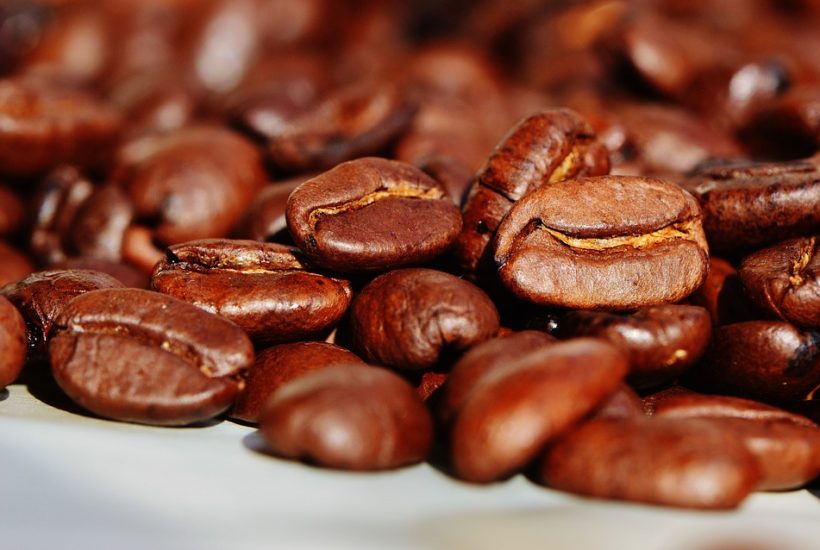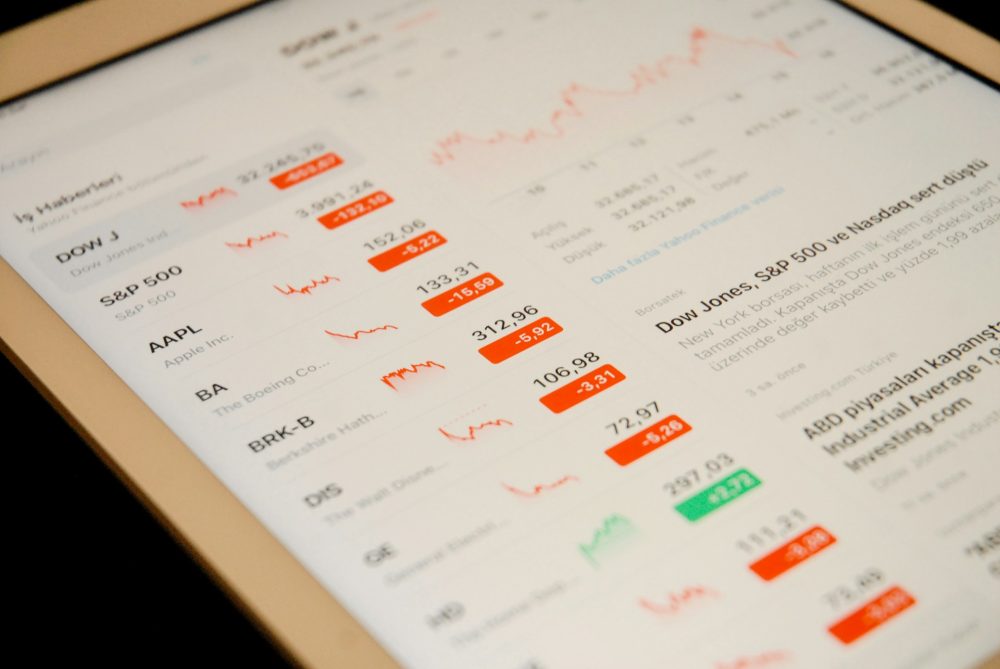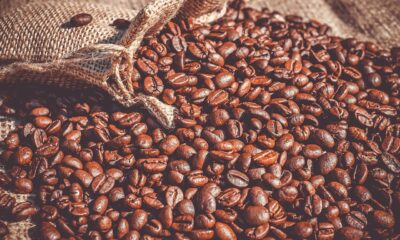Featured
Coffee futures close higher on idea of strong Brazil exports
Coffee futures closed lower on ideas that the export pace from Brazil remains strong, and as roaster buying remains generally hard to find. The new harvest is now well past 80% complete and is starting to become available, so the country should be able to keep up a strong export pace for at least the next few months.

Wheat
Wheat markets were lower again last week in reaction to the USDA reports and on reports of weaker world Wheat prices. The USDA reports for Wheat showed higher than expected production and increased ending stocks potential for the current crop. The reports were negative for Wheat prices but the major weakness came from spillover selling in the Corn pit. The Corn estimates were very bearish for the market and Corn moved limit down in response. Egypt tendered for Wheat last week and bought from Ukraine and Russia. The prices paid were well below any potential US offer, and in fact US Wheat was not even shown in the offer list. It was an indication to traders that US Wheat is still priced too high in the world market. Trends have turned down in Wheat markets and HRW Wheat is near some major support points on the weekly continuation charts. The US Winter Wheat harvest is about over but the Spring Wheat harvest is just underway. Wheat prices could stay relatively weak as the Spring Wheat harvest moves to completion and traders will look for higher European and Russian offer prices for signs that the selling is coming to an end.
Corn
Corn closed sharply lower for the week in reaction to the bearish production estimates released by USDA on Monday. Oats closed a little higher. USDA showed much more production than the trade had expected by showing a higher planted area than expectations and a higher yield than expectations that was up 3.5 bushels from the June estimate. Most in the trade had expected yields to be cut slightly. Futures moved limit down right after the report and saw more selling as the week progressed. Futures closed higher on Friday and there are hopes for more stable prices this week. Much of the increased yield potential came from western areas where conditions have been generally better than in the east. Illinois crops remain far behind the normal pace and were dry. Some showers and storms passed through the state over the weekend to give crops a much needed watering. The precipitation could cause a short term move flower on Monday, but attention is turning to the Pro Farmer Crop Tour which moves through the Midwest this week. The trade will concentrate on the yield results with analysts looking at the actual counts of ears and kernels to give clues for the real crop potential. The potential is there for a good crop, but the weather has been less than favorable and a late freeze is needed along with much improved weather to create the big crop.
Soybeans and Soybean Meal
Soybeans and Soybean Meal closed a little lower last week in reaction to the USDA crop reports. USDA left yield estimates unchanged but showed higher planted area than anticipated. Demand was cut a bit so ending stocks were very high once again. There was demand noted for new crop Soybeans last week in the daily reporting system and in the weekly export sales reports, so there was some good news for bullish traders. However, the trade war with China continues with no end in sight and China is buying all it needs from Brazil. That is less this year due to the Asian Swine Flu that continues to wreck havoc on hog herds in China. The Pro Farmer Crop Tour is this week and it is uncertain what they will see. Our one day tour on Central Illinois showed many Soybeans ready to flower and some with some pods set. The plants were showing some stress due to the lack of rain, but some parts of the state including Chicago saw some showers and storms both days. We look for a choppy market now until the crop production can be better defined.
Rice
Rice was lower last week trends are down in this market. USDA showed higher than expected planted area and production potential and many in the trade are questioning these estimates. Traders note the bad weather seen at planting time and know that many farmers were not able to plant all of the area they intended. The harvest is underway in Texas and Louisiana and reports indicate average yields at best. There are reports of smut in Rice areas southwest of Houston. Good yields are reported just west of Houston but variable yields are seen in Louisiana and southwest of Houston. Crops to the north in Arkansas will be coming off flood soon and expectations range from average to below average yields. These reports and private estimates would indicate that USDA is too high in its production estimates and that the agency will need to lower estimates as more data becomes available. Export demand has waned a bit in recent weeks but remains positive overall. USDA could be underestimating export demand a bit and has shown good domestic demand potential that some traders doubt is there.
Palm Oil and Vegetable Oils
World vegetable oils markets were mixed and closed very close to unchanged last week. The weekly charts for all three markets show that trends are turning up. Palm Oil was in a short term and short covering rally last week on ideas that demand could improve and as the US Dollar moved higher. Production ideas remain high for Palm Oil with both Malaysia and Indonesia talking about big production. The export pace from Malaysia has improved as more was exported in July than in June, but ideas are that the production is strong enough so that the improved demand will not do that much to create a tight stocks scenario. Exports for the first half of August have held firm. The weather has featured some rains but also dry periods and is being called good for Palm Oil production. Soybean Oil was a little lower. The US is facing increased competition for sales now from South America, and mostly from Argentina. Argentina has traditionally been the major source for Soybean Oil in the world market as it prefers to use other oils at home for its cooking needs. The weather in the US has been uneven in the US after a very delayed start to the growing season. There are valid questions on how many Soybeans will be produced and the amount of Soybean Oil the US will have to sell. US Soybeans will need a very late end to the growing season this year to have all that much in the way of Soybean Oil to offer into the world market. Canola was slightly higher last week on uneven weather conditions. Parts of the Prairies remain too dry although rains have increased lately. The provincial reports have noted the uneven conditions as the growing conditions have been rated less than 50% good to excellent. Production ideas are starting to slide again and are now around 18 million tons after first reports indicated that 20 million tons or more could be produced. Demand has been strong recently as domestic crushers try to take advantage of very positive crush margins.
Cotton
Cotton was higher for the week and demand ideas started to improve. Demand was strong last week in the export sales report as Bangladesh stepped up and secured large amounts of US Cotton. USDA showed increased production potential and increased ending stocks on Monday. Production was estimated near 22.5 million bales and the estimate was considered aggressive by the trade. Traders note uncertain weather conditions in Texas as hot and dry weather continues to affect dryland Cotton in adverse ways. The bad conditions were featured in the weekly condition reports last Monday. On the other hand, conditions in the Delta and Southeast are good to very good and this is also reflected fin the reports. Progress remains very close to the five year average even though some in the trade say that the crops are late and development is behind. Ideas are that prices found a value area for overseas buyers in the last couple of weeks. That implies that futures should try to build on the positive close from last week.
Frozen Concentrated Orange Juice and Citrus
FCOJ was a little lower last week and could move lower again this week. The daily charts show that trends are down but the weekly charts show that futures held a support area. The weather in Florida remained tranquil as the state has seen frequent showers and storms that have aided in development in the fruit. There are no hurricanes likely to hit the state this week. Trends are sideways to down on the daily charts and weekly charts as the market looks at a big orange crop and weak demand for FCOJ. Inventories in Florida are still 17% above a year ago. Fruit for the next crop is developing and are as big as baseballs. Crop conditions are called good. Mostly good conditions are reported in Brazil.
Coffee
Futures closed lower in both markets on ideas that the export pace from Brazil remains strong and as roaster buying remains generally hard to find. The new harvest is now well past 80% complete and is starting to become available so the country should be able to keep up a strong export pace for at least the next few months. The Brazil harvest is moving along and producers are trying to store the crop due to the current low prices. Reports indicate that the yields are not real strong and that the quality of the crop is poor due to extreme weather seen early in the growing season. Vietnam is also reporting lower yields for the current crop as the weather was not good for flowering earlier in the year. There have been some hot and dry spells that have hurt yield and quality for these crops as well, but showers are reported in the Central Highlands recently and some flooding was reported. Production ideas are starting to come down. Robusta prices are holding better than Arabica prices due to the Vietnamese weather and also due to some reports of drier weather in Indonesia. Central America has Coffee on offer, but bid prices from buyers have been very low.
Sugar
Futures closed lower for the week in both markets. World supplies still appear ample for the demand potential. Reports from India indicate that the country still has a large surplus of White Sugar that probably must be exported. India is reporting below normal monsoon rains, but rains have been much better lately. The last couple of weeks have featured above average rains. There are concerns that the Indian monsoon will not be strong this year and that Sugarcane production could be hurt. Processing of Sugarcane in Brazil is slower and the pace of the crush is behind last year. Mills are refining mostly for ethanol right now as has been the case all season. The fundamentals still suggest big supplies, and the weather in Brazil is good enough and India has improved to support some of the big production ideas.
Cocoa
Futures closed lower on follow through speculative selling. Some of the selling in New York was currency related as the US Dollar has held very strong. The uneven weather in West Africa is still a feature. The weather in Ivory Coast has been drier than normal for the last couple of weeks and there is some talk that production of the next main crop could be hurt. Some showers are returning to West Africa now to help relieve stress on trees. Ideas are that the next crop will be good. The harvest will start in the Fall. Growing and harvesting conditions in Asia are also reported to be good. The harvest is ongoing amid showers, but good progress in the harvest is expected at this time. More and more Asian Cocoa has been staying at home and processed in Indonesia for export in the region. Demand in Asia has been growing and Indonesia has been eager to be the primary source of Cocoa.
—
DISCLAIMER: This article expresses my own ideas and opinions. Any information I have shared are from sources that I believe to be reliable and accurate. I did not receive any financial compensation for writing this post, nor do I own any shares in any company I’ve mentioned. I encourage any reader to do their own diligent research first before making any investment decisions.

-

 Markets2 weeks ago
Markets2 weeks agoNavigating the Fourth Turning: Cycles of Crisis and Opportunity
-

 Cannabis4 days ago
Cannabis4 days agoIs Aurora Cannabis Stock a Risk Worth Taking?
-

 Impact Investing2 weeks ago
Impact Investing2 weeks agoEU Eases CO2 Tax Burden on SMEs with Revised CBAM Rules
-

 Business6 days ago
Business6 days agoAmerica’s Debt Spiral: A $67 Trillion Reckoning Looms by 2035

























